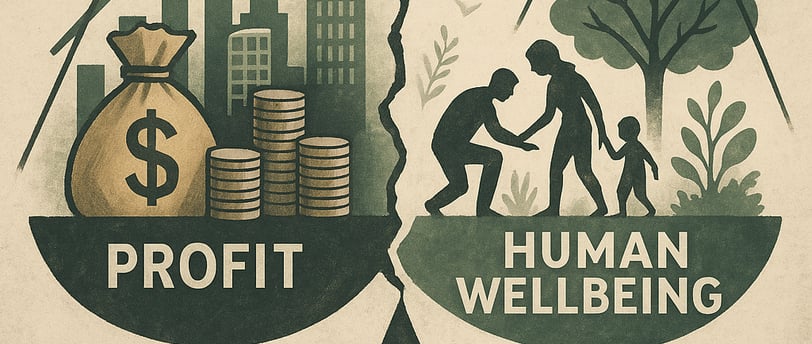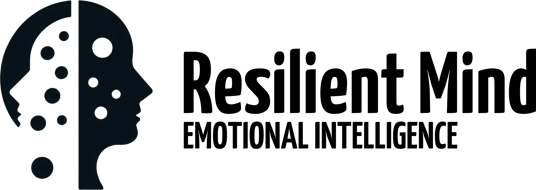The Profit Industry in Sociopathies: How Corporations Exploit Our Neurobiology
In the silence of marketing laboratories and corporate boardrooms, a quiet revolution has been taking place: the scientific instrumentalization of our neurological vulnerabilities. As doctors and healthcare professionals, we are trained to identify pathologies in individuals, but rarely do we turn our clinical gaze toward the structures that shape collective behaviors. This article invites you on a disturbing journey behind the scenes of the dopamine economy and the institutionalization of behaviors that, if observed in individual patients, would be promptly diagnosed as severe personality disorders.
5/3/20254 min read


The Neuroscience of Hijacked Happiness
Gabor Maté, in his provocative book "The Myth of Normal," dedicates an entire chapter – "They Don't Care If You Die" – to a deep analysis of sociopathy as a market strategy. The distinction that Maté establishes between pleasure and happiness is not merely semantic, but neurobiologically grounded:
Pleasure vs. Happiness: A Crucial Neurological Distinction
Pleasure: Characterized by intense and ephemeral peaks of dopamine and endogenous opioids, creating seek-reward cycles that easily become compulsive
Happiness: Sustained by stable release of serotonin, providing a lasting sense of contentment and completeness
"The difference between pleasure and happiness is not just philosophical, but neurobiological. While pleasure operates in the immediacy of dopamine, genuine happiness inhabits the long-duration serotonergic circuits." — Adapted from Gabor Maté
This neurobiological distinction has profound implications for our understanding of contemporary mental health. When entire economic systems are built to maximize the exploitation of pleasure circuits at the expense of sustainable happiness systems, we are facing a structural pathology.
Neuromarketing and the Science of Manipulation
The convergence between neuroscience and marketing is not accidental. Large corporations invest millions in research using functional magnetic resonance imaging (fMRI) and other advanced technologies to precisely map how our brains respond to specific stimuli. This field, known as neuromarketing, represents the systematic commercialization of happiness in bottles.
Neurological Capture Strategies
Bliss Points: Precise identification of the ideal combination of salt, sugar, and fat that maximizes dopaminergic response
Compulsion Architecture: Design of products that deliberately avoid complete satiety
Emotional Triggers: Association of products with specific emotional states, creating psychological dependencies
As revealed by Michael Moss in "Salt, Sugar, Fat: How the Food Giants Hooked Us," executives of major food companies openly discuss strategies to create "loyal consumers from cradle to grave" – a phrase that, if clinically analyzed, reveals a disturbing lack of empathy.
The Corporation as a Psychopathic Entity
Joel Bakan, in his seminal work "The Corporation," performs a fascinating exercise: he applies the diagnostic criteria for personality disorders to corporate structures. The result is disturbing: many corporations exhibit characteristics consistent with the diagnosis of psychopathy:
Corporate Diagnostic Criteria:
Indifference to others' feelings: Decisions based exclusively on financial metrics
Inability to maintain lasting relationships: Conditional loyalty to stakeholders
Disregard for others' safety: Cost-benefit calculations for recalls vs. lawsuits
Recurrent dishonesty: Strategic communication that obscures risks
Absence of remorse: Externalization of social and environmental costs
"It's not that they want us to die, but they are completely uninterested in the potentially fatal consequences of their business models." — Rob Lustig, endocrinologist
The Socioeconomic Metastasis
Bakan's analogy between corporations and cancer cells is particularly illuminating for us, healthcare professionals. Just as a cancer cell grows without respecting the boundaries of surrounding tissue, eventually compromising the entire organism, certain corporate structures expand without consideration for the social fabric or planetary boundaries.
This malignant transformation is not just metaphorical; it represents the institutionalization of behaviors that, in any clinical context, would be immediately recognized as pathological.
Systemic Symptoms of Corporate Pathology:
Growth at any cost: Valuing expansion over sustainability
Damage externalization: Transferring costs to society and environment
Regulatory capture: Influence over the very mechanisms that should impose limits
Causality denial: Systematic rejection of evidence about caused harm
The Normalization of the Pathological
Perhaps the most disturbing aspect of this reality is the gradual normalization of sociopathic behaviors on an institutional scale. What would previously be considered abnormal has become the operational norm; the unnatural redefines itself as inevitable.
In the contemporary religion of profit, greed is not just tolerated – it is celebrated as a virtue. Public health, mental and physical, becomes mere acceptable collateral damage in the relentless pursuit of economic growth.
The Inversion of Values in Clinical Practice
As doctors and healthcare professionals, we often find ourselves treating the symptoms of a sick system, without questioning its structural causes:
We prescribe antidepressants to patients suffering from burnout in toxic work environments
We treat eating disorders without confronting the industry that profits from body dysmorphia
We medicate hyperactive children without questioning an educational system incompatible with healthy neurological development
Paths to Systemic Healing
Recognizing the pathology does not mean succumbing to despair. As healthcare professionals, we have responsibility not only for individual treatment, but also for collective health. Some strategies for systemic intervention include:
1. Structural Diagnosis
Apply our clinical gaze not only to individuals, but to the structures that shape behaviors. Identify sociopathic patterns in policies, corporate practices, and economic systems.
2. Prescription of Boundaries
Just as we establish therapeutic boundaries for patients with personality disorders, we must advocate for regulatory boundaries for corporate entities that demonstrate sociopathic behaviors.
3. Reconnection Therapy
Promote economic models that reconnect corporations with the consequences of their actions, internalizing costs currently externalized to society and environment.
4. Education for Discernment
Empower patients and communities to recognize and resist manipulative marketing strategies, developing a "cognitive immunity" against neurological exploitation.
Conclusion: From Pathology to Possibility
The identification of sociopathic patterns in corporate structures is not an exercise in cynicism, but a necessary step toward collective healing. As professionals dedicated to integral health, we have the ethical duty to expand our understanding of pathology to include the systems that shape human behavior.
When a corporation demonstrates systematic indifference to the suffering it causes, we are not just facing a business strategy, but a diagnosis that requires intervention. True emotional intelligence, on a social scale, requires the recognition that collective mental health depends on economic structures that respect our neurobiology rather than exploit it.
The path ahead is not simple, but as doctors and healthcare professionals, we are familiar with the complexity of healing. Perhaps our greatest contribution is to apply our clinical knowledge not only to individuals, but to the systems that shape their lives
